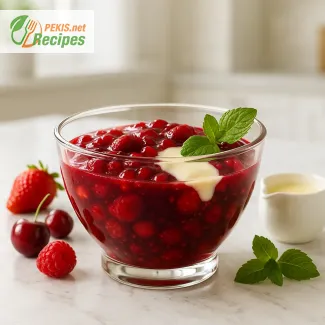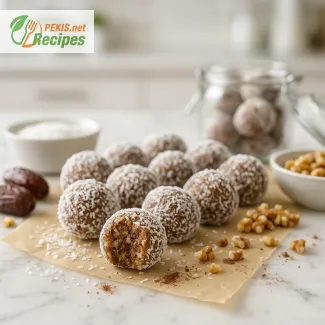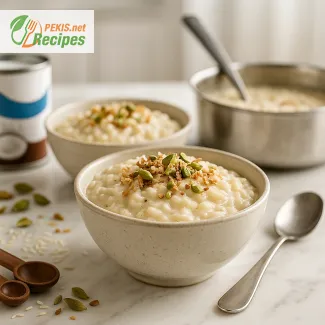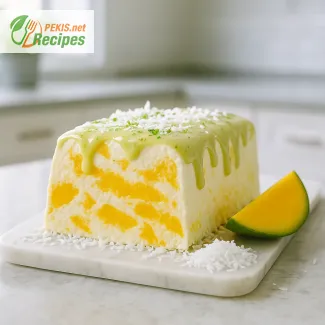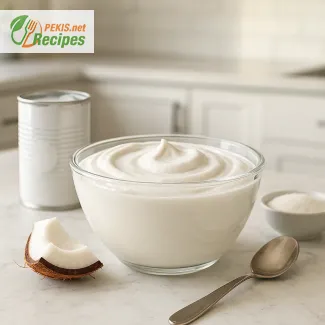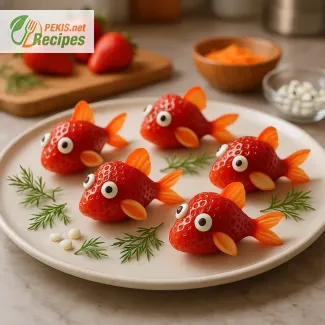
Creative fruit art for children’s snacks: turn strawberries into playful fish
A clever way to make healthy food fun and exciting for kids
Finding new ways to make healthy snacks for kids both exciting and visually appealing can be a rewarding challenge for parents and caregivers. The Strawberry Fish Snack offers a delightful and imaginative way to transform ordinary strawberries into charming, fish-shaped bites that bring joy to snack time. With their bright red color and naturally sweet flavor, strawberries are an ideal fruit for shaping into these playful sea creatures. Combined with simple elements like sliced carrots, almond slivers, and candy eyes, this snack becomes a creative masterpiece that's as fun to look at as it is to eat.
This idea is more than just a cute presentation – it taps into how visual stimulation can encourage children to explore healthy food options more willingly. By turning something familiar like strawberries into amusing animal shapes, kids are more likely to reach for fruit over processed snacks. These adorable strawberry fish are perfect for themed parties, lunchboxes, summer treats, or simply as a fun activity in the kitchen. The recipe requires no cooking, only simple assembly, which also makes it a great bonding experience for parents and children.
Crafting edible art with fruit has gained popularity in recent years, especially as part of a growing interest in creative children's food presentations. It’s not just about aesthetics – these small visual changes can significantly influence children’s eating behavior. When healthy food is presented in a playful and colorful manner, it becomes far more attractive to little ones, especially during early development when food aversions are most common.
Why strawberry fish snacks are a parent’s favorite
Parents searching for easy kid-friendly recipes often struggle to find options that are both nutritious and appealing. The strawberry fish snack hits both marks – strawberries are naturally rich in fiber and antioxidants, and the preparation involves no added sugars or artificial ingredients. Furthermore, the fish design encourages storytelling and imaginative play at the table, which can lead to a more positive attitude toward fruit consumption.
Unlike many decorative food ideas that rely on complex techniques or special equipment, this snack is intentionally simple. Strawberries form the body, with carrot slices or slivered almonds becoming fins and tails. Edible eyes – made with yogurt drops or candy – add personality and charm. The result is a platter of colorful, playful treats that can be assembled in minutes and enjoyed by all ages.
This snack also offers a great solution for picky eaters. Rather than coaxing children to eat fruit, parents can offer these visually interesting snacks and watch as kids reach for them out of curiosity and delight. It's a win-win: the children enjoy a fun, hands-on experience, and the adults can feel confident that they’re serving a wholesome, fruit-based snack.
Inspiring creativity in the kitchen
Beyond the nutrition, strawberry fish snacks encourage creativity. Parents, teachers, or caregivers can turn the snack preparation into an interactive activity where children help “build” their own fish. Choosing fins, eyes, and tails gives kids a sense of ownership over what they’re eating, which often leads to higher levels of enthusiasm around food.
The visual appeal also makes this recipe ideal for social sharing. Whether it’s used as a birthday party idea, a summer picnic treat, or just a midweek surprise, these snacks are often photographed and shared because of their whimsical look. The combination of color, form, and character allows them to stand out on any snack table.
In educational or childcare settings, strawberry fish can be part of a themed lesson or craft day. Teachers can use the concept to talk about marine life, nutrition, or color recognition, all while giving children something they can safely help prepare and eat. The tactile aspect of assembling the fish also supports fine motor skill development in younger children.
A versatile and allergy-conscious snack option
Since this snack can be easily adapted with different ingredients, it’s a flexible choice for children with dietary restrictions. Carrot slices can be swapped with apple peels or bell pepper strips; almond slivers can be replaced with sunflower seeds or omitted entirely. The focus remains on fresh fruit and fun shapes, which makes it suitable for many dietary preferences.
The idea behind strawberry fish snacks also aligns with a larger movement of plant-based snacking for kids. Instead of packaged sweets or salty chips, parents are leaning into recipes that rely on whole fruits and vegetables. This snack fits right into that approach, offering flavor, texture, and visual charm without relying on processed foods.
Incorporating this kind of snack into a weekly meal routine is also simple. A quick batch can be made for after-school snacks, added to lunchboxes, or served as part of a larger fruit platter. Because strawberries are often in season during spring and summer, they provide an affordable and accessible ingredient that’s both versatile and universally liked by children.
Engaging presentation meets nutritional benefit
One of the best parts of the strawberry fish snack is its universal appeal. While created with kids in mind, it’s also a charming addition to family gatherings, brunch tables, or themed events. The cheerful appearance appeals to everyone, and the simplicity of the preparation means even novice home cooks can achieve a professional result.
Unlike many novelty recipes that sacrifice nutrition for appearance, this idea stays rooted in healthy eating. It celebrates the natural sweetness and visual appeal of fruit, subtly encouraging healthier choices without preaching or pressure. The snack sparks smiles, invites interaction, and makes wholesome food the star of the show – all wrapped up in a fish-shaped bite that’s impossible to resist.
- Prepare the strawberries: Rinse the strawberries under cold water and gently pat them dry with a paper towel. Trim the leafy tops to form a clean, rounded surface. Lay them on their sides to resemble small fish bodies.
- Make the tail fins: Slice the carrot diagonally into thin oval pieces. Cut small notches into the ends of each slice to mimic a fish tail shape. Insert one tail at the back of each strawberry by making a small incision with a knife.
- Create side and top fins: Use smaller carrot slices or almond slivers to form the top and side fins. Make small cuts into the strawberry sides and gently press the almonds or carrot fins into place.
- Add the eyes: Dab a small amount of honey, melted white chocolate, or cream cheese where the eyes will go, then attach one edible candy eye on each side of the strawberry.
- Garnish and decorate: Arrange the finished strawberry fish on a serving plate. Add sprigs of fresh dill as aquatic garnish and place white chocolate pearls or yogurt drops around for a playful touch.
Simple twists to enhance your strawberry fish snack creations
Creative ingredient swaps and kitchen strategies for a better homemade treat
The Strawberry Fish Snack is already a playful and nutritious option for children, but there are numerous ways to elevate the recipe to new levels of taste, texture, and visual appeal. Whether you’re preparing this snack for a birthday party, a lunchbox surprise, or a themed school event, thoughtful variations and ingredient upgrades can make the experience even more delightful — not just for the kids, but for adults who appreciate creative food as well.
Understanding how each ingredient contributes to the overall structure and flavor will help you tailor the snack to suit specific dietary needs, sensory preferences, or seasonal availability. By introducing natural flavors, adjusting textures, or using alternative garnishes, this simple fruit-based snack can become a personalized and well-balanced treat that kids genuinely love.
Boosting flavor and color naturally
While the base of the recipe relies on fresh strawberries, adding subtle natural flavors can make each bite more interesting. Brushing the strawberry surface with a touch of fresh orange juice or lemon zest not only enhances the brightness of the flavor but also prevents the fruit from browning if made in advance. This little citrus lift helps balance the sweetness with a gentle tartness, making the snack more refreshing.
Carrot slices are commonly used for the fins and tails, but using thin slices of mango, papaya, or red bell pepper can introduce different levels of sweetness and color vibrancy. Mango pairs especially well with strawberry, giving the fish a tropical flavor while also remaining soft enough for young children to chew. Bell peppers provide a gentle crunch and are ideal for older children who enjoy a more textured snack.
Alternative ingredients for added nutrients
For parents looking to add more nutritional value, small enhancements can make a big difference. Swapping almond slices with pumpkin seeds or sunflower seeds not only keeps the snack nut-free but also introduces minerals like magnesium and zinc. These seed-based fins can be glued on with a tiny dab of nut-free spread such as sunflower butter or coconut yogurt, depending on the desired flavor profile and allergen considerations.
To make the snack more filling while maintaining its playful look, consider placing each fish on a thin apple or cucumber slice as a base. This adds fiber and a refreshing crunch, turning a small treat into a more substantial bite. For extra appeal, you can use mini whole grain crackers under each fish, making the snack easier to pick up and eat at parties.
Healthier decorations and edible glue substitutes
Most traditional versions of the strawberry fish use candy eyes for fun and character. However, if you prefer a healthier or dye-free option, homemade eyes can be crafted using plain yogurt dots piped onto parchment and frozen, with a tiny chia seed or black sesame seed in the center. This alternative avoids artificial ingredients and adds a wholesome touch.
Instead of using melted chocolate or processed icing to attach decorations, a small dab of cream cheese, Greek yogurt, or fruit puree (like banana or date paste) works well and stays firm enough to hold the components together. These choices align with a whole-food approach and can also enhance the flavor subtly.
Common mistakes and how to avoid them
One of the most frequent mistakes when assembling strawberry fish snacks is using unevenly shaped strawberries. While any berry will taste good, visual consistency makes the fish effect more recognizable. Try to select medium-sized strawberries that are roughly uniform in shape, ideally with a pointed end to serve as the "fish face."
Another issue is using soggy or thick carrot slices. If the carrot fins are too thick, they may fall off or make the snack difficult to eat. To prevent this, use a sharp peeler or mandoline slicer to cut very thin slices. This also applies to almond slivers or any other thin decorations — their size and shape should be proportional to the strawberry body for a harmonious look.
When assembling ahead of time, it’s crucial to avoid moisture buildup. Storing the fish in an airtight container lined with a paper towel helps absorb excess moisture and keeps the snack crisp and fresh. If refrigerating, allow the strawberries to return to room temperature before serving for the best taste and texture.
Why homemade always wins
Creating strawberry fish snacks at home allows for complete control over ingredients, presentation, and dietary customization. Store-bought snacks often include additives, artificial dyes, and excessive sugars that can diminish nutritional value. By making them yourself, you choose every element — from the fruit’s ripeness to the quality of the decorations — ensuring a cleaner, safer, and often tastier experience.
Additionally, the process of making the snack can be a fun and educational activity. Children who participate in building their own snacks are more likely to develop positive associations with healthy food, gain kitchen confidence, and improve their fine motor skills. It becomes more than just a snack — it’s a bonding and learning moment wrapped into one.
Homemade versions also offer better opportunities to teach kids about seasonal fruits, basic food safety, and creative expression in the kitchen. As a bonus, they can be presented beautifully for celebrations without the need for elaborate baking or expensive supplies.
Smarter swaps for more dietary flexibility
If you're preparing this snack for a group, it’s important to keep allergy concerns in mind. Besides nuts, ingredients like dairy or gluten may also need to be removed. While the core recipe is naturally gluten-free and dairy-free, specific decorations can reintroduce these allergens unintentionally. Always double-check store-bought elements like candy eyes or sprinkles.
To replace almond fins, zucchini peels or thin apple slices offer both structure and visual effect. For dairy-free edible glue, options like date paste, agave syrup, or even mashed avocado can provide sufficient adhesion.
Experimenting with color by adding natural vegetable dyes like beet juice or turmeric-infused yogurt to your glue or decorative dots creates a beautiful, safe, and inclusive snack presentation for everyone at the table. Each substitution not only serves a dietary purpose but introduces new flavors and textures that keep the recipe fresh and engaging.
Seasonal variations and serving ideas
This snack can evolve with the seasons. During summer, fresh berries and tropical fruits are widely available. In colder months, freeze-dried strawberries can be used for decoration alongside sliced dried mango or pear chips. The fish theme can even be adapted for holiday versions by arranging them into reef or snowflake patterns on serving platters.
For parties, group multiple strawberry fish on a large tray with blueberry “bubbles” or banana starfish, turning the whole dish into a fruit-based underwater scene. Not only does this increase the nutritional variety, but it also creates a vibrant, interactive centerpiece that guests can enjoy visually before tasting.
These thoughtful modifications allow the original strawberry fish snack to remain relevant across occasions, dietary needs, and individual preferences — making it one of the most versatile and enjoyable treats for kids and families alike.
Allergens present in the recipe
- Almonds (tree nuts)
- Candy eyes may contain milk, soy, or gelatin (check packaging)
Gluten presence
- This recipe is naturally gluten-free, but cross-contamination from candy eyes or decorations is possible.
Tips to eliminate allergens and gluten
- Replace almonds with thin slices of apple, mango, or bell pepper for nut-free versions.
- Use homemade edible eyes made from icing sugar and natural food coloring to avoid dairy, soy, or gluten.
Vitamins and minerals per serving (approximate)
- Vitamin C – 49 mg: Supports immune function and skin health.
- Vitamin A – 415 IU: Promotes vision and growth.
- Folate (B9) – 20 mcg: Essential for cell division and development.
- Potassium – 180 mg: Regulates fluid balance and muscle contractions.
- Calcium – 18 mg: Supports bones and teeth.
- Magnesium – 11 mg: Vital for energy production and nerve function.
- Iron – 0.5 mg: Supports oxygen transport in blood.
Antioxidants per serving (approximate)
- Anthocyanins – 28 mg: Found in strawberries; protect against oxidative stress and inflammation.
- Beta-carotene – 950 mcg: From carrots; converts into vitamin A and promotes skin health.
- Vitamin E – 0.4 mg: Supports cell protection and immune response.
